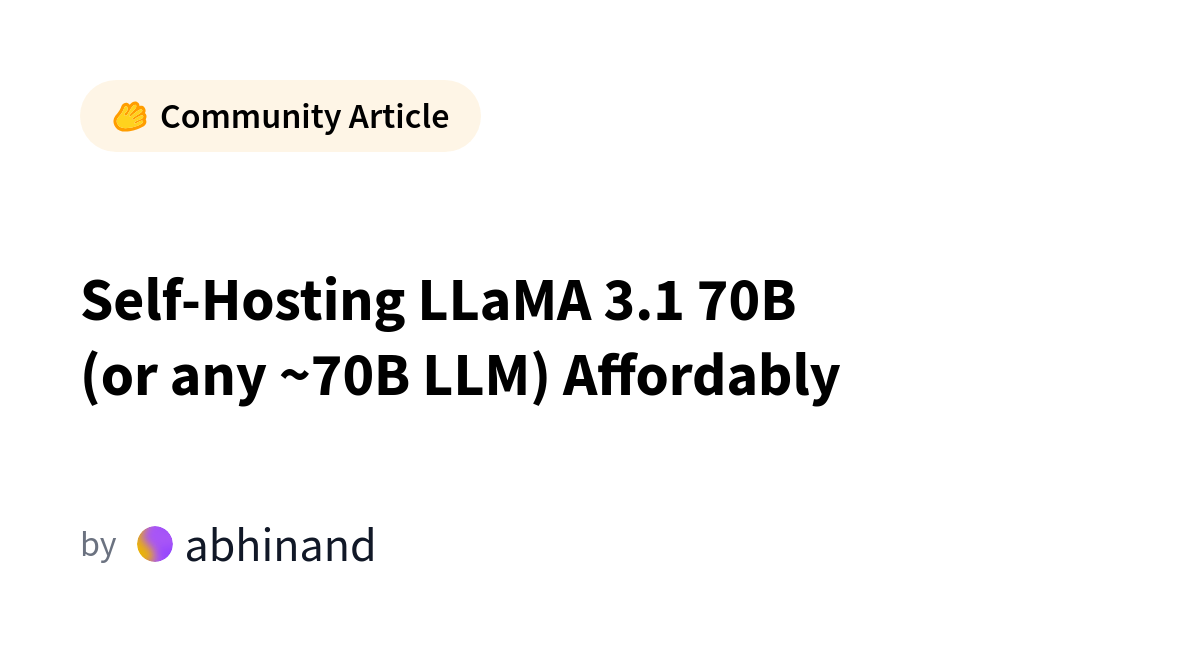How to self-host LLaMA 3.1 70B without spending a fortune
- AI
- LLaMA
- Hosting
Hosting large language models like LLaMA 3.1 70B has become a hot topic among AI developers and researchers. Released by Meta in April 2024, these models represent a top-tier open-source option for production use, going head-to-head with proprietary alternatives such as OpenAI's GPT-4o and Anthropic's Claude 3.5 Sonnet.
The main hurdle in leveraging these models is the need for powerful hardware. Most developers lack the GPU muscle at home to handle 70-billion parameter models. However, cloud solutions offer a cost-effective workaround to this limitation.
Deploying a model like LLaMA 3.1 70B requires careful consideration of several technical factors. GPU VRAM capacity tops the list. A 70B parameter model in FP16 precision demands about 148GB of memory just for the model weights, with additional space needed for context window and KV cache.
A rule of thumb suggests allocating 1.2-1.5 times the model size in VRAM.
Beyond memory, computational power (measured in FLOPS), memory bandwidth, and support for various numerical precisions are crucial. Models of this scale often necessitate a multi-GPU setup.
A recommended configuration for hosting LLaMA 3.1 70B might look like this:
FP16: 4x A40 GPUs or 2x A100 GPUs
INT8: 1x A100 GPU or 2x A40 GPUs
INT4: 1x A40 GPU
Runpod stands out as a particularly suitable cloud platform for this type of deployment, offering a sweet spot between cost and performance.
On the inference software front, vLLM is gaining traction. It boasts numerous optimizations including efficient memory management for attention mechanisms, CUDA/HIP graph execution, and Flash Attention implementation.
Setting up on Runpod is relatively straightforward, but requires attention to details such as choosing the right template, configuring environment variables, and exposing TCP port 8000 for the API.
Once the model is configured, you can consume the API directly or use a proxy like LiteLLM for advanced management. The latter offers benefits in terms of traceability, governance, and scalability, particularly useful in team or multi-model scenarios.
For those seeking a ChatGPT-like user interface to interact with the model, solutions like OpenWebUI can be easily implemented using Docker.
In conclusion, hosting large language models like LLaMA 3.1 70B has become more accessible thanks to optimized cloud solutions and efficient software tools. This democratization of access to advanced AI models opens up new possibilities for personal projects, research, and even small-scale production implementations, allowing developers to experiment and innovate with cutting-edge AI technologies.
If you would like to learn more, here is a link with some more technical details:

Self-Hosting LLaMA 3.1 70B (or any ~70B LLM) Affordably
A Blog post by Abhinand Balachandran on Hugging Face
abhinand05.medium.com
Nessuna descrizione disponibile.